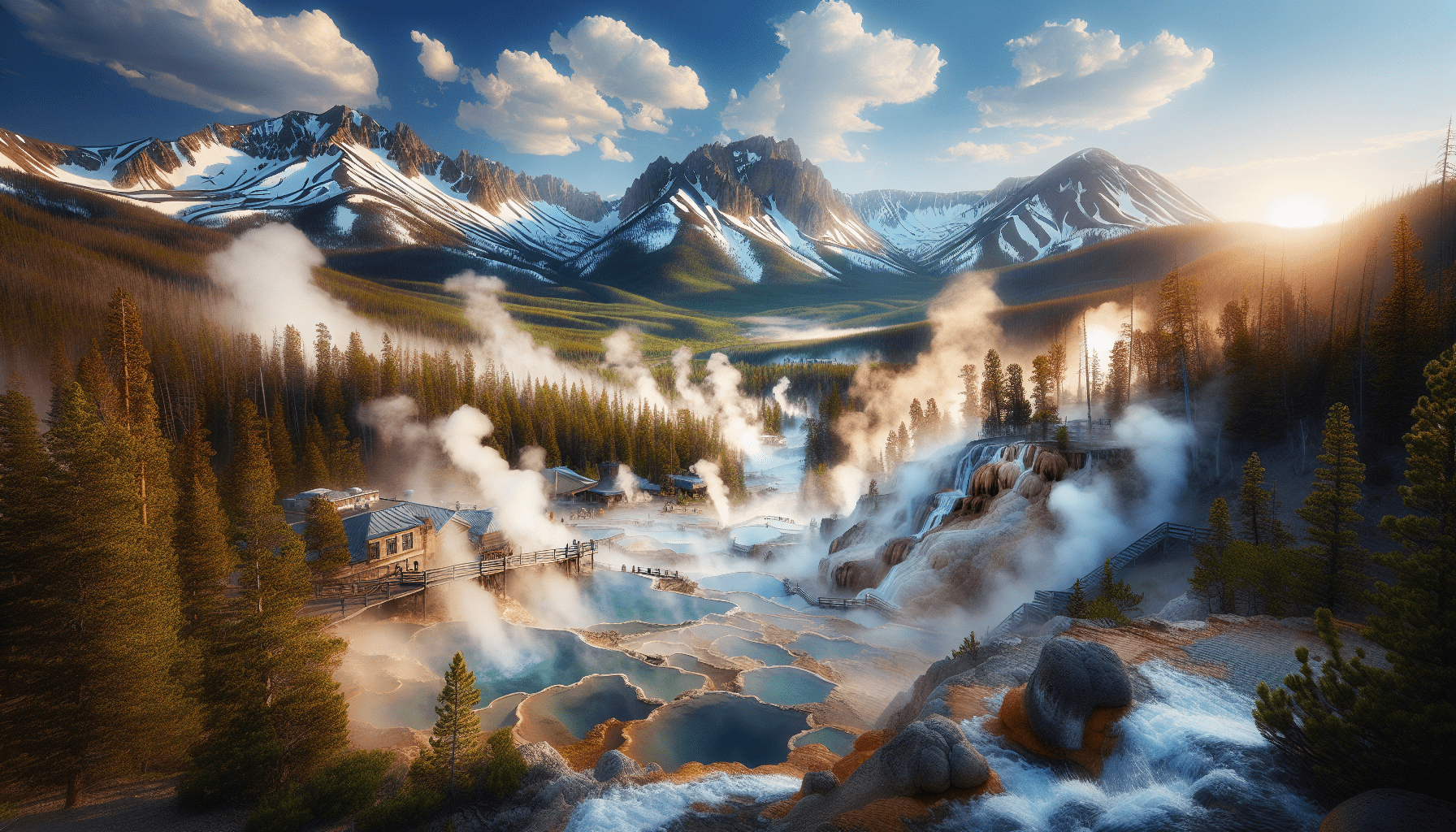Imagine soaking yourself in the warm and inviting waters of Colorado̵7;s hot springs, surrounded by breathtaking natural beauty. But have you ever wondered just how warm these hot springs really are? From the soothing waters of Glenwood Springs to the steamy depths of Pagosa Springs, Colorado boasts an array of hot springs that offer relaxation and rejuvenation. In this article, we will explore the temperature range of these enchanting natural wonders, providing you with all the information you need for your next blissful soak. Get ready to immerse yourself in the warmth of Colorado’s hot springs!
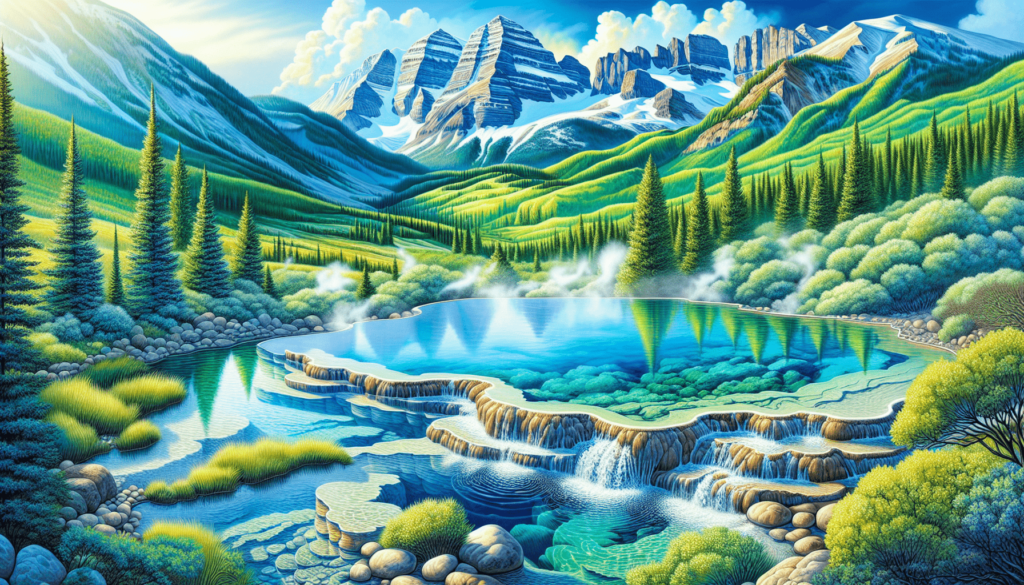
Factors influencing the temperature of hot springs
Hot springs are a natural wonder, and their temperature is influenced by various factors. Understanding these factors can help us appreciate the unique qualities of each hot spring and plan our visits accordingly.
Geothermal activity
One of the primary factors that contribute to the temperature of hot springs is geothermal activity. Hot springs are formed when groundwater is heated by geothermal energy from the Earth’s crust. The intensity of geothermal activity in a region can directly impact the temperature of the hot springs. Areas with high geothermal activity will have hotter springs, while regions with lower activity may have cooler springs.
Depth of the spring
The depth of a hot spring also affects its temperature. Deeper springs tend to have higher temperatures since they are closer to the Earth’s geothermal heat source. As the water travels from the depths towards the surface, it retains the heat and emerges as a hot spring. Springs that have a shallow depth may have lower temperatures as the water has less time to interact with the heat source.
Geographical location
Another significant factor influencing the temperature of hot springs is the geographical location. Colorado is a state known for its diverse landscapes, and the temperature of its hot springs depends on their specific location within the state. Hot springs located in mountainous regions may have cooler temperatures due to the cooler climate and an increased distance from geothermal heat sources. In contrast, hot springs located in lower elevations or close to volcanic activity may have hotter temperatures.
Seasonal variations
Seasonal variations also play a role in determining the temperature of hot springs. During the winter months, hot springs may experience cooler temperatures due to colder air temperatures and potential snowfall. In contrast, during the summer months, hot springs may feel warmer and more inviting. Additionally, rainfall or drought conditions can affect the temperature of hot springs throughout the year.
Temperature range of hot springs in Colorado
Colorado is renowned for its hot springs, offering a wide range of temperatures to suit every preference. Understanding the temperature range can help visitors plan their trips and choose the hot springs that best align with their preferences.
Average temperatures
The average temperatures of hot springs in Colorado can vary significantly. Some hot springs boast temperatures above 100 degrees Fahrenheit, providing a truly immersive hot water experience. Others have milder temperatures ranging between 90 and 95 degrees Fahrenheit, while some may have cooler temperatures around 80 degrees Fahrenheit.
Variations based on location
The temperature of hot springs in Colorado can vary based on their specific location within the state. Hot springs located in higher elevations, such as the ones nestled in the Rocky Mountains, tend to have cooler temperatures due to the alpine climate. On the other hand, hot springs located in more arid regions or closer to geothermal activity may have hotter temperatures.
Seasonal temperature differences
In addition to variations based on location, hot springs in Colorado can also experience seasonal temperature differences. During the winter months, some hot springs may experience a drop in temperature, while others may maintain their warm temperatures. In contrast, summer months can bring slightly higher temperatures to certain springs. It’s important to consider these seasonal variations when planning a visit to ensure a comfortable and enjoyable experience.
Hot springs with the highest temperatures
For those seeking a truly hot bathing experience, Colorado is home to hot springs with some of the highest temperatures in the region. These hot springs offer a chance to soak in water that can reach incredibly warm temperatures, providing a revitalizing and unique experience.
Glenwood Springs
Glenwood Springs is renowned for its hot springs, including the popular Glenwood Hot Springs Pool. The water in these hot springs can reach temperatures of up to 104 degrees Fahrenheit, offering a truly hot and relaxing soak. Visitors can enjoy the therapeutic benefits of the warm waters while taking in the stunning views of the surrounding Rocky Mountains.
Pagosa Springs
Pagosa Springs is another destination known for its hot springs with high temperatures. The geothermal activity in this area results in hot springs that can reach temperatures in the range of 100 to 115 degrees Fahrenheit. The hot springs in Pagosa Springs provide a rejuvenating experience and create a tranquil environment for visitors to unwind and enjoy the healing properties of the warm waters.
Steamboat Springs
Steamboat Springs is famous for both its natural hot springs and its world-class ski resort. The hot springs in this area can reach temperatures around 104 degrees Fahrenheit, offering a soothing and relaxing experience after a day of outdoor activities. Soaking in the hot springs of Steamboat Springs provides a perfect blend of relaxation and adventure.
Hot springs with moderate temperatures
Not everyone favors extremely hot temperatures when it comes to hot springs. For those who prefer a more moderate heat, Colorado offers a variety of hot springs with enjoyable temperatures.
Chalk Creek
Chalk Creek Hot Springs, situated in Nathrop, Colorado, provides hot springs with moderate temperatures. The pools at Chalk Creek have temperatures ranging from 95 to 105 degrees Fahrenheit, allowing visitors to find their preferred level of warmth. Surrounded by the scenic beauty of the Rockies, Chalk Creek offers a serene environment to relax and soak in the soothing waters.
Mount Princeton
Mount Princeton Hot Springs Resort is another destination that offers hot springs with moderate temperatures. The pools at Mount Princeton range from 94 to 105 degrees Fahrenheit, catering to those who prefer a comfortable and warm soak. The resort’s picturesque location and the calming effects of the waters make it an ideal place to unwind and enjoy the healing power of hot springs.
Ouray
Ouray, known as the “Switzerland of America,” is home to several hot springs with moderate temperatures. The hot springs in Ouray typically range from 98 to 106 degrees Fahrenheit, striking the perfect balance between warmth and comfort. Surrounded by the stunning San Juan Mountains, the hot springs in Ouray provide a tranquil and therapeutic experience for visitors.
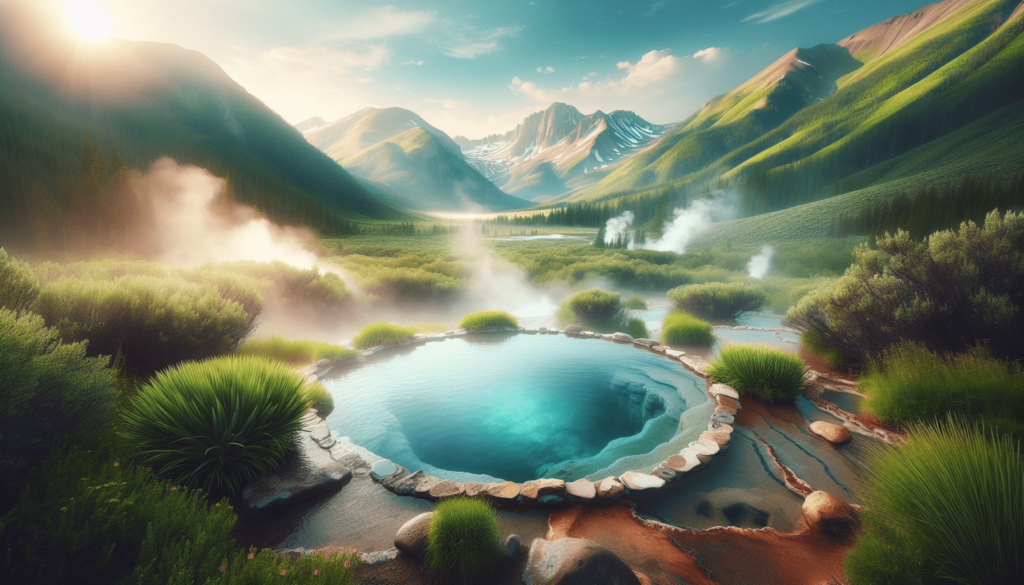
Hot springs with cooler temperatures
If you prefer a cooler hot spring experience, Colorado has options for you as well. These hot springs offer refreshing waters that are still enjoyable, even during warmer months.
Strawberry Park
Located near Steamboat Springs, Strawberry Park Hot Springs offers a unique hot spring experience with cooler temperatures. The pools at Strawberry Park range from approximately 98 to 102 degrees Fahrenheit, providing a refreshing respite from the summer heat. The pool’s picturesque setting among the aspen trees adds to the overall serene ambiance.
Cottonwood
Nestled in the San Isabel National Forest, Cottonwood Hot Springs provides hot springs with cooler temperatures. The water temperatures at Cottonwood range from around 94 to 100 degrees Fahrenheit, making it a popular choice for those seeking a more refreshing soak. The natural surroundings and the relaxed atmosphere create an idyllic environment for visitors to enjoy the cooler waters.
Indian Hot Springs
Indian Hot Springs, located in Idaho Springs, offers hot springs that provide a cool yet invigorating experience. The water temperatures at Indian Hot Springs range from approximately 95 to 100 degrees Fahrenheit. Visitors can indulge in the mineral-rich waters while enjoying the scenic beauty of the surrounding mountains. Whether seeking relaxation or rejuvenation, Indian Hot Springs offers a unique way to experience cooler temperatures in hot springs.
Seasonal temperature variations
Hot springs in Colorado experience temperature variations throughout the year, allowing visitors to enjoy different experiences depending on the season. Understanding the seasonal temperature ranges can help plan and make the most of a hot spring visit.
Winter temperatures
During the winter months, hot springs may experience cooler temperatures, especially in regions with colder climates. Some hot springs may maintain their warmth and offer a cozy escape from the winter chill, while others may have slightly lower temperatures due to the colder air. It’s important to check the specific temperatures of hot springs during winter and ensure they align with personal preferences for a comfortable and enjoyable experience.
Spring temperatures
As spring arrives, hot springs in Colorado start to warm up. The transition from winter to spring brings about an increase in temperatures, creating a more inviting environment for soaking in the hot springs. Spring temperatures typically offer a pleasant balance between warmth and comfort, making it an ideal time to visit and enjoy the therapeutic qualities of the hot springs.
Summer temperatures
Summertime in Colorado brings warmer temperatures to hot springs, offering a perfect respite from the heat. The increased ambient temperatures can result in hotter hot springs, providing a calming and rejuvenating experience. Whether seeking relief from the summer heat or looking to enjoy the stunning natural surroundings, hot springs during the summer months offer a refreshing and enjoyable experience.
Fall temperatures
As summer gives way to fall, hot springs in Colorado start to cool down once again. The transition from summer to fall brings about a decrease in temperatures, creating a more mild and refreshing environment for soaking. Fall temperatures in hot springs offer a unique experience of enjoying the warmth while embracing the changing colors of the surrounding foliage.
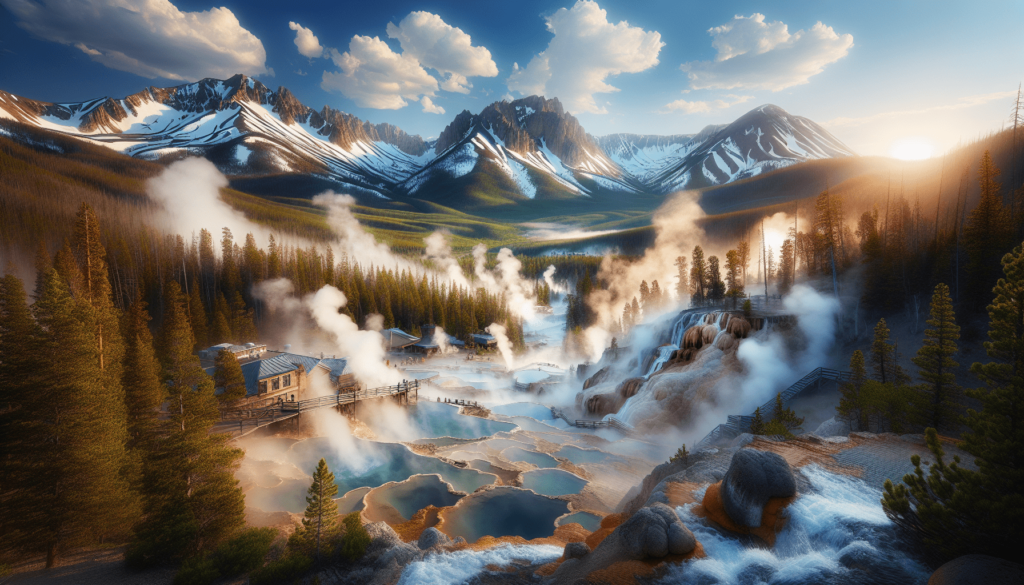
Hot springs and their healing properties
Aside from providing a relaxing and enjoyable experience, hot springs also offer various healing properties. The warmth and mineral content of the water can have a positive impact on both physical and mental well-being.
Therapeutic benefits of warm waters
Soaking in warm waters has been known to provide various therapeutic benefits. The heat from hot springs can help improve blood circulation, relieve muscle tension and pain, and promote relaxation. Warm water can also help with joint mobility, reduce inflammation, and even aid in the recovery process after physical activities.
Mineral content and its effects
Hot springs are often rich in minerals, thanks to the underground geological activity. The mineral content in hot springs can vary, with different springs offering unique compositions. Minerals like magnesium, calcium, and sulfur can have healing properties for the skin, such as soothing inflammation, improving skin conditions, and promoting overall health.
Soaking for relaxation and stress relief
One of the main reasons people visit hot springs is to relax and relieve stress. The combination of warm water, beautiful surroundings, and the soothing sound of nature creates a peaceful atmosphere that helps melt away stress and tension. Soaking in hot springs can provide a sense of calmness, tranquility, and overall well-being, making it a perfect escape from the demands of everyday life.
Finding the right temperature for you
When visiting hot springs, it’s crucial to consider personal preferences and health conditions to find the ideal temperature for an enjoyable and safe experience.
Considering personal preference
Everyone has their own tolerance for heat, so it’s important to choose hot springs with temperatures that align with personal preferences. Some individuals may prefer hotter temperatures for a more intense therapeutic experience, while others may find milder temperatures more comfortable. Taking into account personal comfort levels will ensure a pleasurable and relaxing time at the hot springs.
Understanding health conditions
Certain health conditions may affect an individual’s ability to tolerate higher temperatures or benefit from hot springs. People with cardiovascular or respiratory conditions, for example, may need to avoid extremely hot temperatures. It’s always advisable to consult with a healthcare professional to understand any restrictions or precautions regarding hot spring temperatures and ensure a safe and enjoyable experience.
Seeking advice from experts
If unsure about the appropriate temperature for a hot spring visit, seeking advice from hot springs experts can be helpful. Local hot spring resorts, guides, or experienced visitors can provide insights into the ideal temperature ranges for different preferences and health conditions. Their expertise can guide you in making an informed decision and enable you to have a memorable and comfortable hot spring experience.
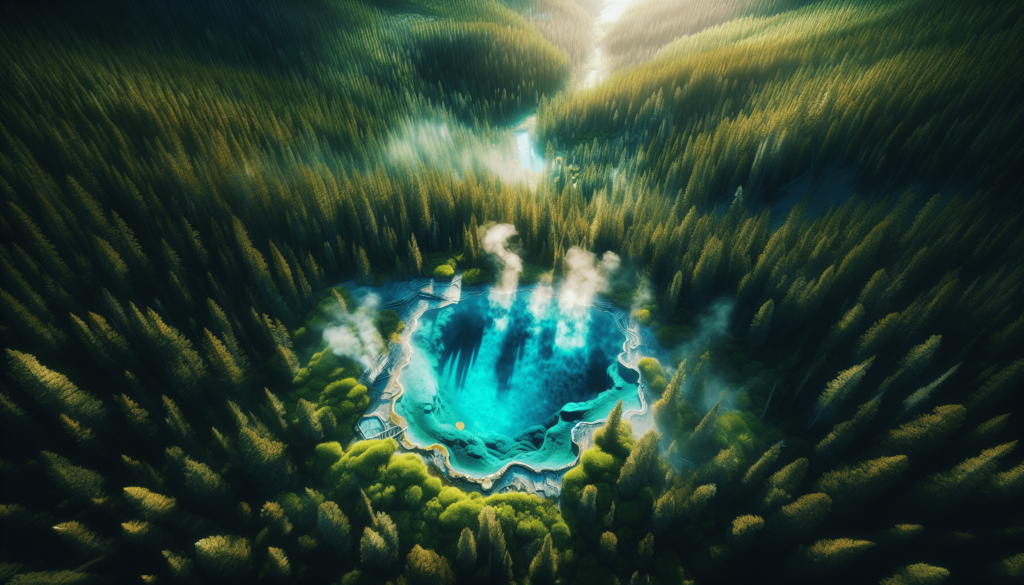
Tips for enjoying hot springs
To make the most of a hot spring visit and ensure a pleasant experience, there are a few essential tips to keep in mind.
Bring appropriate swimwear and towels
When visiting hot springs, it’s important to bring appropriate swimwear that allows for comfortable soaking. Opt for swimwear made from breathable and quick-drying materials. Additionally, bringing towels to dry off and cover up after soaking is essential for comfort and hygiene.
Stay hydrated
Soaking in hot springs can cause increased sweating, leading to a risk of dehydration. It’s crucial to stay hydrated by drinking plenty of water before, during, and after a hot spring session. Keeping a water bottle nearby and sipping regularly will help prevent dehydration and ensure a safe and enjoyable experience.
Observe hot springs etiquette
Respecting the hot springs and other visitors is essential in ensuring a positive experience for everyone. Some hot springs may have specific rules or etiquette guidelines to follow, such as showering before entering the pools or refraining from using soaps or lotions. It’s important to read and adhere to any posted guidelines to maintain the cleanliness and tranquility of the hot springs.
Check for any restrictions or rules
Before visiting a hot spring, it’s advisable to check for any restrictions or rules that may be in place. Certain hot springs may have age restrictions or limited access during specific times. Some hot springs may require reservations or have capacity limits to maintain a comfortable and safe experience for visitors. Checking beforehand will help avoid any disappointments or inconveniences during the visit.
Conclusion
Colorado’s hot springs offer a diverse range of temperatures to cater to various preferences and comfort levels. From hot springs with the highest temperatures like Glenwood Springs and Pagosa Springs to those with more moderate temperatures including Chalk Creek and Mount Princeton, and even cool temperature springs like Strawberry Park and Indian Hot Springs, there is a hot spring for everyone. Whether seeking therapeutic benefits, relaxation, or a refreshing escape, hot springs in Colorado provide the perfect opportunity to enjoy the healing properties of warm waters while being surrounded by the state’s natural beauty. By considering personal preferences, health conditions, and following essential tips, visitors can have a truly enjoyable and rejuvenating experience at Colorado’s hot springs.
